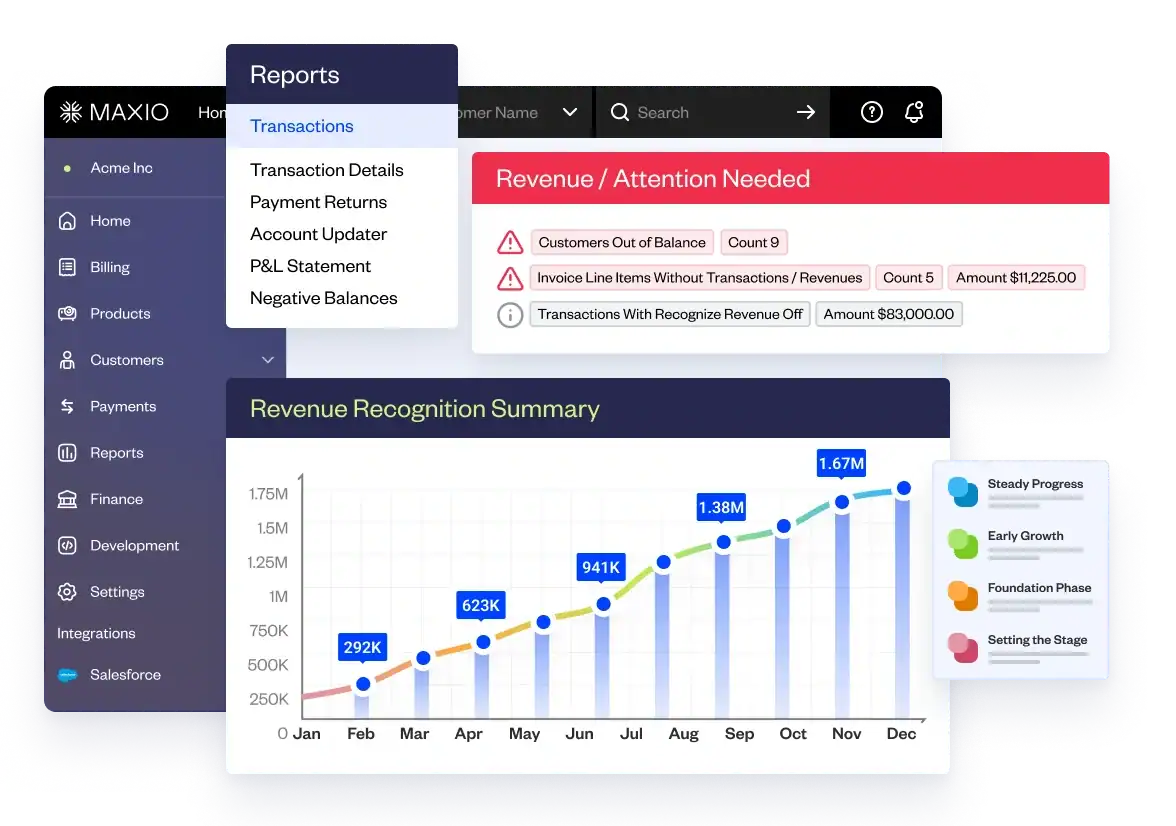The Software as a Service (SaaS) business model is anything but simple—especially when it comes to finance. Between recurring payments, free trials, complex pricing models, and more, finance departments have their work cut out for them. With so many variables to account for, choosing the right financial management tools is an essential step in a SaaS company’s financial journey.
Here’s a list of the essential financial management tools B2B SaaS companies need to keep on growing.
Do You Have All the Financial Management Tools You Need?
Most SaaS companies understand that unique selling points (USP) and product differentiation set them apart from their competitors—but visibility in the marketplace shouldn’t be your only goal.
Clearly-defined financial management processes are what separate aspiring startups and established SaaS companies. In order to make a profit, your financial processes should be just as strong as your product.
Formulas, like ratio analyses, can help you determine if incoming revenue will lead to increased profitability. However, without the tools to do all the heavy lifting, your finance team will be stuck making these calculations all on their own.
Financial Management Tools You Need for Your SaaS Business
Whether you’re bootstrapped or VC-backed, your finances are going to be complex. The following financial management tools make it easier for B2B SaaS companies to take control of their financial operations.
Accounting Software
Accounting software come in all shapes and sizes, from entry-level tools designed for solopreneurs to enterprise platforms built to support financial operations at scale. When choosing accounting software for B2B SaaS, prioritize scalability—especially if your goal is rapid growth. A scalable accounting solution gives your finance department greater flexibility as annual revenue increases.
With the right accounting software, you can handle all your basic accounting tasks, including invoices, vendor contact management, billing automation, tax preparation, payroll processing, expense tracking, and more.
Expense Tracking and Recognition
Finance teams can use expense tracking tools to capitalize, recognize, and report on expenses such as prepaid, fixed assets, and sales commissions. All you have to do is manually add items to your journal entries. Investing in revenue recognition software to handle expenses gives you more time to perform related tasks, such as rebilling, reimbursement, and expense accounting.
SaaS Metrics and Analytics
This clearly isn’t a finance tool, so why is it on the list?
SaaS-specific metrics—like ARR, NRR, and Churn—paint a clear picture of a company’s financial health and help your finance team guide you through funding stages all the way to an IPO. A miscalculated SaaS metric can also have serious downstream consequences on your valuation and your ability to make effective business decisions.
In an industry where data rules all, a metrics and analytics tool gives finance teams a competitive edge.
Spend Management
With spend management tools, you can see how your company spends its money. Often, these tools are a part of Enterprise Resource Planning (ERP) software; however, they are also available as individual point solutions. You can use this software to help with requisitioning, controlling spending pipelines, and streamlining your budget approval processes.
Billing & Payment Processing
As SaaS continues to become customer-centric, users want more control over how they pay for products and services. Subscription billing software allows B2B companies to align their pricing strategy with how customers consume their SaaS.
Combined billing and payment processing tools can help out your finance team as well. With total control over your company’s pricing model, you can create a faster billing process and reduce delays in your accounts receivables.
Payroll Management
Scaling a SaaS business requires hard work, hard work requires dedicated employees, and dedicated employees need to be paid. Payroll management software gives SaaS companies flexible payroll options, tax filing and compliance capabilities, and—depending on your vendor—analytics to generate payroll analysis reports.
Finance teams, in particular, can use global compliance features offered by payroll tools to account for fast-changing regulations across geographies.
Tax Preparation
Tax preparation software makes it easy for growing businesses to maximize their tax credits and deductions. It also helps finance teams streamline the billing process by importing data to your company’s payroll, invoicing, and billing software. By using these tools, your company can easily pay its taxes and stay compliant.
How Maxio Can Help
If you are trying to find the best financial tools for your business, we can help. Maxio offers tools to support your payments, revenue retention, subscription management, and recurring billing.
Offer Management
Flexible subscription billing makes it easy to meet customer expectations when it comes to the pricing of your SaaS. You can create stacked promotions for thousands of contacts with set renewal dates. Plus, you can access other features, such as 1:1 billing, upselling support, and portfolio monetization.
Recurring Billing
Recurring billing saves your company time spent sending and following up on invoices manually. You can set renewal timing, define tax rules, and choose various payment methods based on your customers’ needs.
Subscription Management
Subscription management helps SaaS companies track and manage subscriptions throughout the customer lifecycle. By keeping a close eye on your users, you can strengthen customer relationships, decrease churn, and increase lifetime value.
Analytics & Insights
Maxio’s software gives companies real-time insights into SaaS-specific metrics and analytics. You can look at your monthly reporting revenue, usage analytics, offer movements, revenue recognition, and more.
Payments
Maxio’s payments gateway can be integrated with a range of other programs. This financial tool lets you process payments from online sites, cards, and ACH. Plus, you can track your customers’ payment information in a PCI-compliant environment.
Integration Marketplace
The integration marketplace makes switching to Maxio easy. If you really love some of your other financial management tools, you can bring them along with you.
Security & Reliability
In order for your company to do its best, it must be secure. Clients won’t subscribe for long if they think their data isn’t in safe hands. Through Maxio’s security and reliability features, you can keep your business protected.
For example, Maxio is PCI DSS Level 1 compliant. To protect our clients, we use two-factor authentication and hacker-tested programs. You can also stay secure with other features, like data redundancy, 99.9 percent uptime, detailed user access controls, and 24/7 monitoring.
The Customer Experience
At Maxio, we focus on providing the best customer experience possible for your clients. You can pick the offers and emails your customers receive. Plus, your customers can manage their accounts online, saving you time spent on 1:1 customer support.
Scaling Your SaaS Business
Managing a SaaS company is challenging, and it becomes harder as you start to scale. With Maxio, you can achieve scalable growth through flexible billing and advanced FinOps workflows. To see how Maxio can help your SaaS business, sign up for our a demo.






